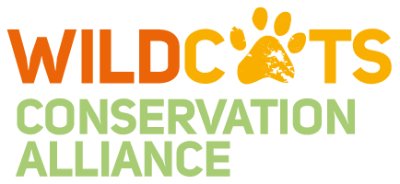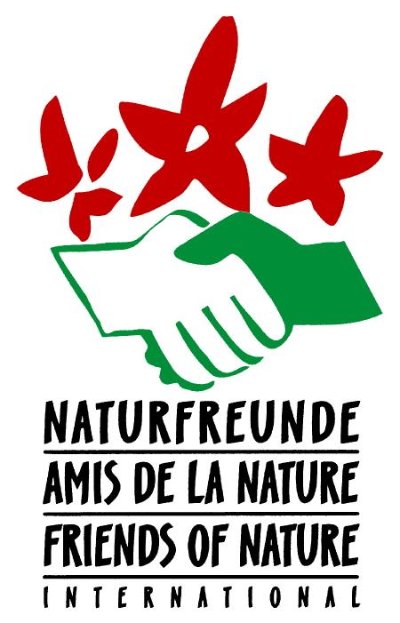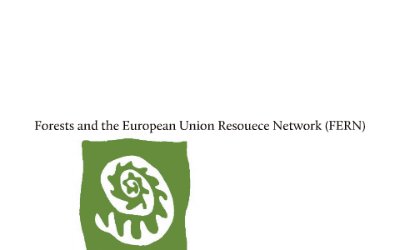Are you looking for some active environmental organizations in Europe? Well, this list has that covered just for you. Go through the article to get a glimpse of these nature-saving organizations.
A large number of wildlife and environmental organizations in Europe were founded in response to concerns in Africa, Asia and South America. European organizations mainly raise awareness and funds to support fieldwork and education in different countries around the world.
Some take a more direct approach and have programs in place to reintroduce animals into the wild. Other European organizations also work to protect local wildlife and eco-systems, with the same zeal and passion.
If you are not familiar with some of the most active environmental organizations in Europe, we have gone the extra mile to research and compile this comprehensive list just for you.
Learn more about who these organizations are and what they do for the environment.
Top European Environmental Organizations
1. EEB (European Environmental Bureau)

When it comes to environmental preservation in Europe, the EEB leads the pack. It is the largest community of environmental citizens’ organizations in all of Europe. In fact, it is currently comprised of more than 160 member organizations, in over 35 countries.
The organization also represents more than 30 million individual members, who support its mission and programs. EEB targets to achieve a greener environment, where future generations can thrive in peaceful coexistence with nature. It envisions a world with flourishing biodiversity where environmental degradation and climate change is no longer a threat.
The European Environmental Bureau deals with some of the most pressing environmental issues in Europe through agenda formulation, offering advice, and influencing how the EU handles these challenges.
Some of these issues include:
- Biodiversity
- Climate change
- Circular economy
- Environmental pollution
- Policies touching on energy, industry, product design, agriculture and waste management
The EEB also advocates for sustainable development, participatory democracy, and good governance both within Europe and outside.
2. CAN Europe

Climate Action Network Europe (CAN) features on our list of top environmental organizations in Europe for a good reason. Firstly, it’s among Europe’s largest environmental organizations, and secondly, it tackles some of the world’s most pressing environmental issues.
The organization, which comprises of more than 170 member organizations, is present in over 38 European nations and represents over 47 million citizens. It mainly advocates for sustainable climate, as well as energy and development policies across Europe and beyond.
The organization envisions a world that actively strives to achieve global climate protection, while still promoting equity, social justice and sustainable development.
CAN Europe is a member of the “Climate Action Network (CAN) International.” This is a global community of over 1,100 NGOs that work to promote actions limiting human activities that lead to climate change.
3. European Cyclists’ Federation (ECF)

As its slogan goes, “Bicycling is the European way!” Founded back in 1983 by just 12 bicycle user associations, ECF has grown to become the umbrella federation for all Europe’s cycling organizations. Its aim is to promote the use of bikes in urban centers as the main means of transport.
Currently, ECF boasts of over 81 member organizations, which represent individual cyclists and citizens across 45 countries globally. While this non-governmental organization tries to lobby for cycling policy in Europe, it also actively promotes cycling culture at the global level.
One of the ECF’s main goals is to see cycle tourism recognized as a sustainable economic factor, as well as an environment-friendly mode of transport. In addition, the organization advocates for:
- Cyclists’ security
- Improved cycling modal share
- Vulnerable road users’ safety
Due to the rising greenhouse gases emissions, ECF continues to promote cycling as the most sustainable and healthy mode of transport, which everyone should adopt. It believes that this can be a solution to most of the climate woes the world is facing.
See Related: Audrey Raubenheimer
4. Seas at Risk

This is another independent environment NGO in Europe that consists of both national and international organizations striving to protect, preserve and restore the marine environment. Seas at Risk mainly focus on the North and Irish Sea waters, as well as those of the larger North-East Atlantic.
Based in the Netherlands, Seas at Risk not only tackles within-the-boarders issues but also partners with international groups. The organization mainly acts as a political and technical platform intervening for environmental groups at international political meetings, as well as at governments’ legal meetings.
Currently, the organization is campaigning for an international political amendment on various issues, including:
- Overfishing
- Marine environmental damage due to fishing activities
- Marine pollution from ships
- Negative effects on marine life due to hazardous oil and gas exploration
- Species and habitat protection
- Disposal of hazardous materials into the water bodies
Seas at Risk is one of the main environmental organizations in Europe that are tirelessly working to see a clean, non-polluted marine environment.
5. European Environment Agency (EEA)

The EEA is a European Union Agency. The agency’s task includes the provision of correct and independent data on environmental issues in Europe. It acts as the major source of information not only for the people seeking to develop, adopt, implement or evaluate environmental policy but also to the general public.
While the regulation that established the EEA was adopted back in 1990 by the EU, it became active in late 1993. This was after the decision of basing the EEA in Copenhagen, and which saw the agency commence its work in 1994.
EEA works in partnership with the Eionet (European environment information and observation network), which was also established through the same law.
The EEA’s main mandate includes:
- Helping the community and member countries reach informed decisions regarding environmental preservation and improvement, integrating environment concerns while making economic policies and embracing sustainability.
- Coordinating the Eionet
Currently, the EEA consists of 32 member nations, and six other cooperating ones.
See Related: Angora and Faux Fur Production
6. WildCats Conservation Alliance

Formerly known as ALTA & 21st Century Tiger, WildCats Conservation Alliance is one of the environmental NGOs in the UK, working to preserve wildcats in Europe and Asia. This initiative is a partnership between two London-based organizations; the Dreamworld Wildlife Foundation and Zoological Society of London.
WildCats Conservation Alliance main goal is to protect the endangered wild tigers and Amur leopards. Through funding from generous partners, the organization is able to protect these wild cats, giving the future generations a chance to relate with these animals.
WildCats Conservation Alliance has numerous conservation projects in:
- China
- India
- Indonesia
- Nepal
- Russia
- Malaysia
- Thailand
- Bhutan
- Bangladesh
It is one of the top European environmental protection organizations that help to guarantee the future existence of such endangered species.
See Related: Dyer Island Conservation Trust
7. DSWF (David Shepherd Wildlife Foundation)

DSWF is one of the few environmental organizations in Europe that fund conservation projects in Africa and Asia. The organization’s objective is to create more awareness of the need for humans to take care of wildlife and protect their habitats.
In partnership with its community-based conservation partners, the organization is determined to fight for, and protect some of the world’s most endangered species, as well as protect their habitats. This is especially due to the continued decrease of wildlife populations and their dwellings, due to climate change and human activities like deforestation and poaching.
Some of the organization’s achievements in African and Asia include:
- The establishment of the first Zambian Pangolin Protection Program aimed at rescuing and releasing pangolins back to the wild from the hands of poachers.
- The establishment of Elephant Orphanage in Zambia.
- Educating over 10,000 Zimbabwean kids about conservation and wildlife.
- Funding undercover investigations in Asia, to expose the cross-border animal trafficking routes and criminals.
- Inspiring the local communities to become the first line of defense for their wildlife.
See Related: Global Meat Production and Consumption
8. Coalition Clean Baltic (CCB)

On February 1990, various environmental NGOs from the Baltic Sea Region, came together to form what is today known as the CCB (Coalition Clean Baltic). This was meant to help them join effort and partner in activities affecting the Baltic Sea.
This environmental organization is a non-profit organization that is also politically independent, working towards the preservation of the Baltic Sea. Currently, the coalition consists of around 26 member organizations from countries like Russia, Finland, Sweden, Estonia, Germany, Lithuania, Latvia, Poland and Denmark. Combined, CCB has over 500,000 members across these countries.
The NGO’s main objective is to advocate for protection, preservation, and enhancement of the environment and natural resources of the Baltic Sea.
Some of the main focus areas include:
- Water protection in agriculture
- Fisheries and aquaculture
- River basin & wastewater management
See Related: Bear Trust International
9. Royal Society for the Protection of Birds (RSPB)

This is a charitable organization, created in 1889, to promote the protection and conservation of birds, as well as the larger environment. The organization whose members include England, Whales, and Scotland, works by:
- Creating public awareness campaigns
- Creating petitions
- The actions of nature reserves across the UK
In collaboration with the civil service, the RSPB works to advise the government on policies related to environmental conservation and protection.
Currently, the RSPB comprises of more 1,300 employees, over 18,000 volunteers, and over 1 million members. This makes it one of the largest wildlife conservation charities in Europe. In addition, the organization also maintains around 200 nature reserves.
See Related: Environmental Organizations in North America
10. International Friends of Nature

The organization, which was established in 1895 in Austria, is a non-profit organization that promotes sustainable tourism and encourages international friendship. Also known as Naturfreunde in German, this organization started among individuals who loved outdoor activities and who also believed in taking care of nature.
The main pillars of the International Friends of Nature rest on:
- Sustainable development
- Regional ecological development
- Ecological tourism
Currently, this movement has grown to around 45 member organizations, over 350,000 members, and runs about 700 houses in Europe. The Vienna-based IFN (International Friends of Nature) is the umbrella organization of all the national Friends of Nature organizations.
The foundation of this movement rests on the belief that personal development opportunities are inseparable to nature’s protection and natural resources conservation.
And for this reason, the IFN strives to promote the best relationship between humanity and the environment.
See Related: Types of Terrain Around the World
11. International Solar Energy Society (ISES)

This is another non-profit environmental organization in Europe that focuses on the advancement of alternative/renewable energy sources. Created back in 1954, ISES is popularly known to be a trusted and reliable source of advice, when it comes to matters renewable energy.
Through its diverse membership of professionals, researchers, academics, decision-makers, businesses, etc., ISES conducts research that helps the renewable energy sector to grow. It’s through knowledge sharing, and various community-based programs that ISES enables it’s members to transition to renewable energy.
The main goal of this organization is to help the world transition from the current use of non-renewable energy, to a 100% use of renewable energy.
How does ISES achieve its goals?
- Promoting global solar research and development
- Supporting a sustainable solar industry
- Offering actionable advice on issues renewable energy
- Encourage workforce development
- Advocate for energy education for everyone
See Related: Monterey Bay Aquarium
12. Friends of the Earth Europe

Friends of the Earth Europe is among the largest grassroots environmental organizations in Europe. It has united over 75 national organizations, over 5,000 of community-based groups, and more than 2 million global supporters. And, it’s all for the protection and preservation of our natural environment.
The organization envisions a peaceful and sustainable environment, where people, animals and nature, can all live in harmony. To achieve this, Friends of the Earth Europe, actively campaign for the urgent address of the pressing environmental and social problems. They advocate for immediate and permanent solutions that ensure harmonious living between us and nature.
Some of the main issues that this organization focuses on include:
- Climate justice
- Energy savings
- Fossil Free Europe
- Renewable energy
- Corporate accountability
- Agriculture, etc.
See Related: David Sheldrick Wildlife Trust
13. Forests and the European Union Resource Network

FERN is a Dutch-based environmental organization that was created back in 1995. This organization was formed with the sole aim of protecting the forests and the communities that depend on them. It keeps track of the EU’s involvement in forests, as well as coordinates the various NGO activities in Europe.
FERN identifies possible threats facing forests globally, and work with affected communities, environmental organizations, and policymakers, with the aim of creating solutions that can make a difference.
